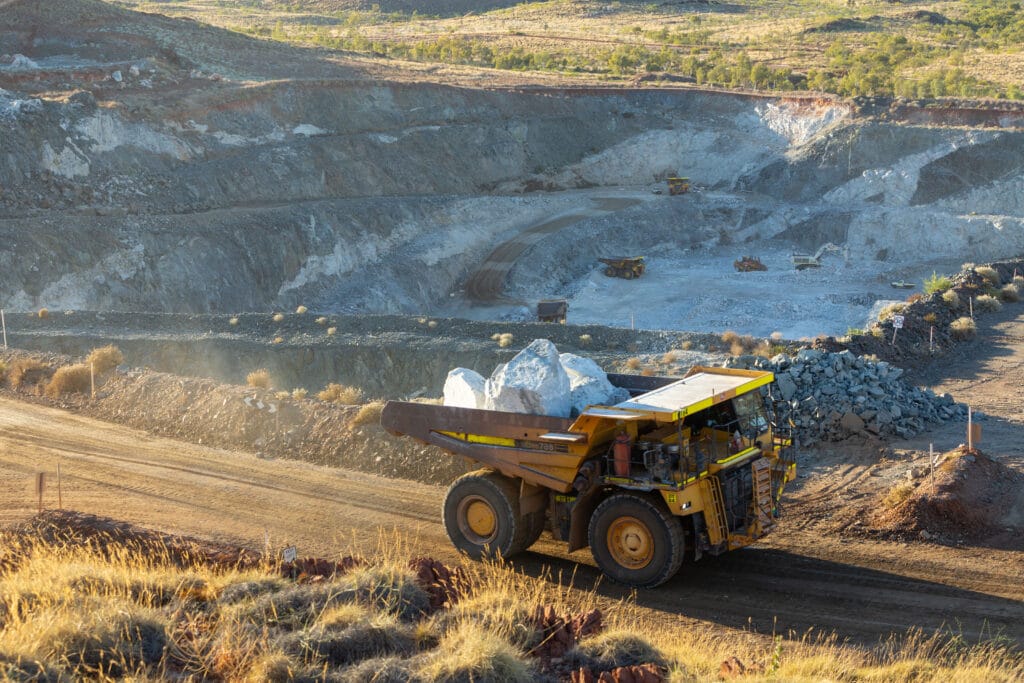
A critical review of developments in the global lithium industry during the fourth week of 2024 and key takeaways by Chris Williams, Analyst at Adamas Intelligence.
Liontown Resources announced last week the debt syndicate providing an A$760M loan facility have backed out, citing weakening lithium price forecasts from analysts.
Liontown’s Kathleen Valley mine in Western Australia is principally an underground mine, expected to produce 600 ktpa of 6% Li2O spodumene concentrate through a 3 Mtpa whole-of-ore flotation plant, due to commence production mid-2024.
The developer is reviewing its mine plan for cost optimizations, including delaying the 4 Mtpa expansion previously set for 2027. As such, the firm has resumed talks on a revised, smaller debt facility for working capital / contingency requirements. The A$515M cash balance is expected to fund construction activities to first production.
Adamas take: Liontown’s fall from grace, unthinkable just 3 months ago, appears to be deepening. Given the project’s advanced stage and strategic value, it shouldn’t have any issue finding the funds, though timing isn’t ideal for renegotiations. During ramp-up, it is estimated Kathleen Valley will require a SC6 price of ~$1,100/t to be cash flow positive on an AISC basis.
Albemarle last week announced plans to reduce 2024 capital expenditures by $300-500M, 25% below 2023 levels, and to reduce operational costs by $95M p.a., including headcount reductions.
The update will see a deferral of CAPEX for the South Carolina mega-flex lithium conversion facility, previously earmarked for construction activities in late 2024. The facility’s first phase was anticipated to produce 50 ktpa of lithium hydroxide in the 2027 timeframe. Also deferred is CAPEX into the North Carolina materials R&D facility known as the Albemarle Technology Park.
Trains 1-3 of Western Australia’s Kemerton conversion facility will progress, however there appears to be uncertainty regarding train 4, with several media outlets inferring train 4 is being delayed. The final 25 ktpa of lithium hydroxide conversion capacity here was earmarked for 2027.
Adamas take: A curtailment in growth expenditure is likely to be a trend in 2024 as optimistic expansion plans from boomtimes are unwound to a more comfortable pace.
Pilbara Minerals announced last week a 14% reduction in unit costs to A$639/t SC5.2% FOB ($603/t SC6 CIF China), comfortably below todays market price of ~$1,000/t.
A 22% increase in unit production was achieved (176 kt), in part owing to the ramp up of the “P680” +100 ktpa spodumene concentrate expansion.
The “P1000” +320 ktpa SC expansion project will continue unabated, however there will be a reduction in non-essential capital expenditure of A$55 – 100M, down 8% from prior FY24 guidance.
Adamas take: Pilbara’s outlook is for its operations “to withstand and capitalize on a period of lower prices that could rationalize the market”. A powerful show of strength from one of Australia’s top hard rock exporters.
Controlled Thermal Resources (CTR) hosted a groundbreaking ceremony last week to mark the commencement of construction at its Hell’s Kitchen project in the Salton Sea, California.
Hell’s Kitchen will be the first geothermal DLE lithium project in the world to go into construction. Phase 1 of the project is set to produce 25 ktpa of lithium hydroxide monohydrate and 50 MW of geothermal power from 2027. Long-term, the project is said to be scalable up to 175 ktpa of LiOH.H2O and 350 MW.
In 2023, the private company received equity investments from auto’s GM and Stellantis to the tune of $50M and $100M, respectively. Stellantis has offtake rights of 25 – 65 ktpa LiOH.H2O.
Adamas take: The Salton Sea offers seemingly endless potential for lithium units on US soil, though it remains unproven in a commercial setting. With energy credits, Adamas is less skeptical on the potential of geothermal absorption-DLE than other low-grade DLE applications. However, it will be some years before the concept is proven.